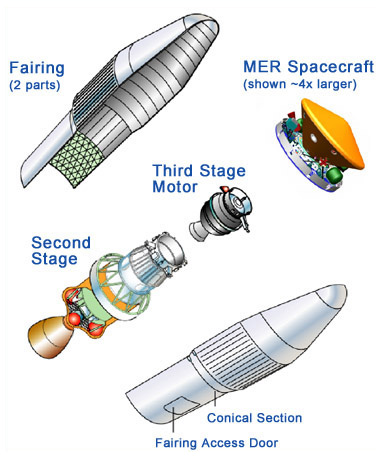
The Function of a Payload Fairing on a Rocket: Protecting Precious Cargo
When you witness a rocket launch, there’s a lot more happening than just the dramatic ignition of engines and the rocket’s ascent into the heavens. One of the less visible but vitally important components of a rocket is the payload fairing. This seemingly unassuming shell plays a crucial role in the success of a space mission. In this article, we’ll delve into the function of a payload fairing, why it’s essential, and how it contributes to the overall success of a rocket launch.
1. What is a Payload Fairing?
A payload fairing is a protective shell that surrounds the payload of a rocket. The payload refers to the satellite, spacecraft, or cargo the rocket is carrying into space. The fairing is typically conical or cylindrical in shape and is located at the top of the rocket. It encloses and shields the payload during the initial phases of the rocket’s ascent through the Earth’s atmosphere.
2. Protection from Aerodynamic Forces
One of the primary functions of a payload fairing is to shield the payload from the harsh aerodynamic forces experienced during the rocket’s ascent. As a rocket pierces through the Earth’s atmosphere at high speeds, it generates enormous amounts of aerodynamic pressure, friction, and turbulence. Without the protection of a fairing, the payload would be exposed to these extreme conditions, which could cause structural damage or even destruction.
3. Aerodynamic Drag Reduction
A well-designed payload fairing also helps reduce aerodynamic drag on the rocket. The streamlined shape of the fairing minimizes air resistance, allowing the rocket to reach higher velocities more efficiently. Once the rocket reaches a certain altitude where the atmosphere becomes much thinner, the fairing is no longer needed, and it can be jettisoned to reduce weight and improve the rocket’s overall performance.
4. Protection from Environmental Factors
In addition to aerodynamic forces, a payload fairing provides protection from environmental factors such as rain, hail, and even bird strikes during the rocket’s ascent. These factors, while seemingly minor, could potentially damage sensitive equipment on board the payload.
5. Thermal Control
Space missions often involve extreme temperature variations, especially during the transition from Earth’s atmosphere to the vacuum of space. The payload fairing can provide thermal insulation to shield the payload from the temperature extremes it might encounter.
6. Contamination Prevention
The payload fairing also helps prevent contamination of the payload. In space science missions, even minute contamination from Earth can interfere with sensitive scientific experiments or instruments. The fairing acts as a barrier, keeping the payload in a controlled, clean environment until it reaches space.
7. Customization for Different Payloads
Payload fairings are typically customized for each specific mission. They come in various sizes and configurations to accommodate different payload shapes and sizes. This customization ensures a snug fit, maximizing protection and minimizing excess weight.
8. Jettisoning the Fairing
Once the rocket has ascended to a certain altitude and the atmospheric conditions are no longer a threat, the payload fairing is jettisoned. This event is carefully timed and controlled to ensure that the fairing falls away from the rocket and the payload without risking collision or damage.
Conclusion
While the payload fairing may seem like a simple component of a rocket, it plays a pivotal role in ensuring the success and safety of space missions. By shielding the payload from the intense aerodynamic forces, environmental factors, and temperature fluctuations experienced during launch, the fairing allows precious cargo to reach space intact and ready to fulfill its mission objectives. It’s a testament to the meticulous engineering and attention to detail required for successful space exploration.

